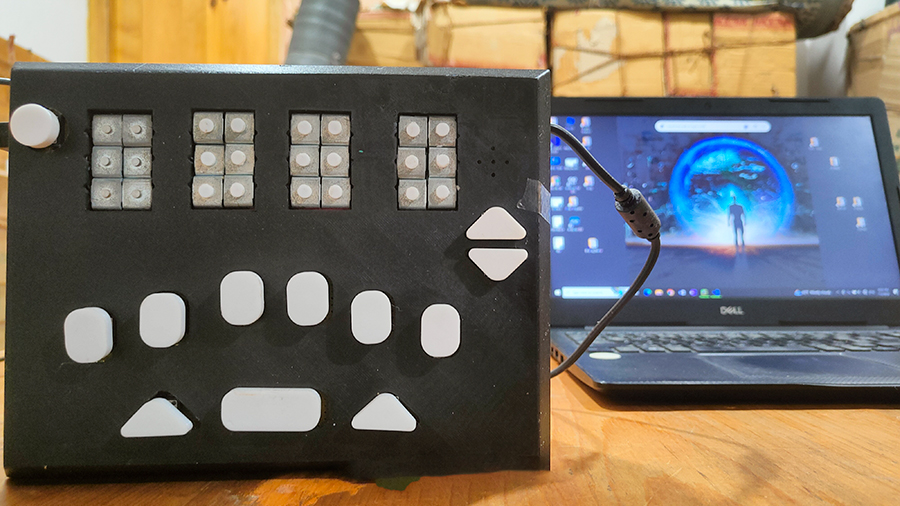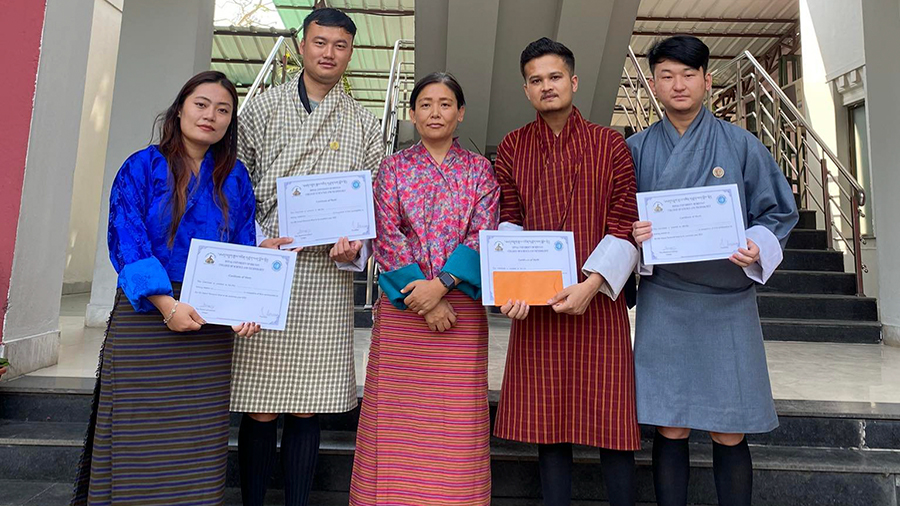
Picture Courtesy: Digital Dzongkha Braille Board
A group of former students of the College of Science and Technology has achieved a milestone by creating the country’s first-ever prototype of electronic Dzongkha Braille. The device is called as Digital Dzongkha Braille Board. Initially a college project, their innovation has evolved into a passion to help the visually-impaired community in reading and writing Dzongkha.
 The group of young minds, 24-year-old Mani Kumar Basnet, 25-year-old Ugyen Tshering, 24-year-old Sonam Wangmo and 23-year-old Garab Gyeltshen came up with the Digital Dzongkha Braille Board as a project for the final year of their Bachelor’s in Electronic and Communication Engineering course at the College of Science and Technology.
The group of young minds, 24-year-old Mani Kumar Basnet, 25-year-old Ugyen Tshering, 24-year-old Sonam Wangmo and 23-year-old Garab Gyeltshen came up with the Digital Dzongkha Braille Board as a project for the final year of their Bachelor’s in Electronic and Communication Engineering course at the College of Science and Technology.
The college assignment later turned into a passion. Their ambition was fuelled by the lack of accessible Dzongkha electronic Braille machines and the high costs of Braille devices available in other countries.
The device features six buttons that allow users to effortlessly write Braille alphabets. It skilfully converts the input into an audible sound or tactile pop-ups that can be read by touch, offering multiple ways for the visually impaired to interact with the text.
“We always thought of working with assistive technology to help those in need. We decided to help the visually impaired. While researching, we found that there are lots of devices to help the visually impaired, but we saw that they were also very expensive. So, we thought that we could develop one for our own country, why not even in Dzongkha since there are no such devices in Dzongkha,” said Mani Kumar Basnet, one of the team members.
The prototype was developed with less than Nu 15,000. The team plans to further reduce it to less than Nu 10,000 to make it accessible to more people.
“We have currently focused on writing, reading and saving files. Saving happens over SD cards right now but we would like to use cloud storage in the future. We can interface with our PC even now. In the future, we are hoping to design it so that we can even interface with our mobile phones through Bluetooth or Wi-Fi connections. We will be working on that. We are also planning to develop it for classroom purposes,” added Mani Kumar.
Despite being away from each other after graduation in June this year, the team continues to involve in the development of their device. To find out if their device could be used practically, they even sought the guidance and feedback of the Disabled People’s Organisation, to refine their invention further.
Recently, they also presented their prototype to the Ministry of Education and Skills Development, at the request of the ministry. The team said besides some recommendations to improve on their initial work, they mostly received positive feedback from the visually impaired individuals.
Karma Samten Wangda
Edited by Sonam Pem









